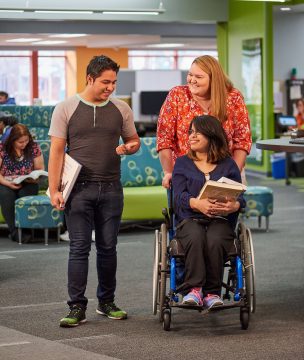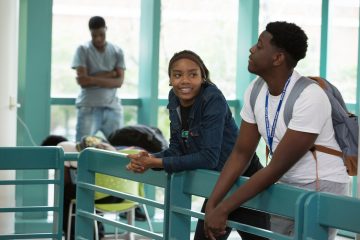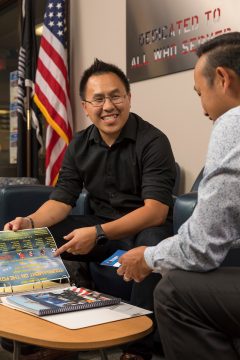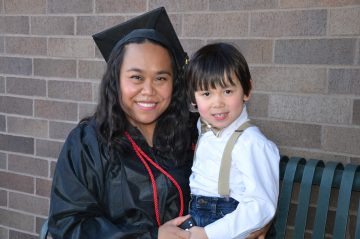Inclusion is the degree to which all individuals in a community are welcomed, valued, respected, heard, and able to participate. Creating inclusive college communities requires intentional action to address historical underrepresentation and exclusion with respect to (WTCS Diversity, Equity and Inclusion):
- career and academic success
- hiring
- promotion and leadership
- campus climate
- curriculum
- access to resources
It is the consistent goal of Wisconsin’s technical colleges to be “student-ready” and to assure the success of all students, helping them to achieve their academic and career goals. Doing so serves not only students but is also critical in meeting the needs of Wisconsin’s employers (Systemwide Equity Report 2021). This work requires recognizing, including and supporting the success of students, as well as college employees. Without also focusing on college employee wellbeing and inclusion, students will not receive the quality support and mentorship they need to thrive in postsecondary education and transitioning to the workforce.
As part of the Working As One professional learning and collaboration series, college leaders, faculty, staff, students and stakeholders from across the state discussed and helped develop the Creating Inclusive Spaces A Resource Guide. Below, is an abbreviated version of this guide with some additional resources to further explore these topics and recommendations.
We are also developing WTCS Voices podcast episodes that highlight the voices of students and employees from the perspective of inclusion: What are their experiences at their college? What barriers have they faced? What best practices have welcomed and supported them? The first episode discusses the experiences of parenting students. You can find a link to the podcast at the bottom of this webpage.
Individuals with Diverse Abilities
People with diverse abilities are individuals with many abilities who are experts on their own experiences and in control of their own lives. Understand that ‘for some people, disability is an identity, but for others, it is situational and unpredictable’ (Marion Quirici 2019). To foster inclusion and belonging, follow the lead of the individual in how they identify and what language they use to describe themselves. Avoid using terms that focus on limitations (e.g., handicapped, special needs, hearing-impaired). Understand that many individuals need accommodations due to institutional barriers. There are ways to reduce institutional barriers that increase equity and inclusion for all students (e.g. universal design, captioned media, accessible learning content). It is easier and more effective to plan with accessibility and inclusion in mind rather than engaging in rework.
Additional resources:
- Student activism for disability justice and holistic access by Marion Quirici (TEDx Duke)
- Disability Inclusion from the Centers for Disease Control and Prevention
- How to include people with disabilities from Respect Ability
- Disability Language Style Guide from the National Center on Disability and Journalism
Individuals of Color
People of color in the United States often receive messages that they are “other” or “exotic,” and their experiences have been decentered from what is considered “normal.” This is largely due to the false prioritization of whiteness throughout the history of the United States and the perpetuation of systemic racism. To foster inclusion and belonging, do not make assumptions of a person’s background, abilities or experiences based on how they look, and do not single people out to speak for their real or assumed race/cultural group. Learn and pronounce individual’s names correctly, and ensure positive representations of people of color, their cultures and their histories in your work.
Additional resources:
- A dozen-plus ways you can foster educational equity from Inside Higher Ed
- The state of students of color in Wisconsin from RISE
- Brave dialogues: A guide to discussing racial equity in career technical education from Advance CTE
- On shaky ground: Students of color in predominantly White institutions recording of a student panel from Black Heritage Trail of New Hampshire
LGBTQIA+ Individuals
Individuals’ LGBTQIA+ identities may not be visible or physically apparent. It is important not to assume anyone’s sexual orientation or gender identity and to provide opportunities for people to identify how they would like to be addressed (name, pronouns, etc.). To foster inclusion and belonging, provide your own gender pronouns and the opportunity for others to do so, use gender-neutral language (e.g., spouse or partner), and include positive representations of LGBTQIA+ people, history, and events in your classes and work.
Additional resources:
- Supporting LGBTQ-Inclusive Teaching by Sabia Prescott (New America)
- Creating an LGBT-Inclusive Climate from Teaching Tolerance (written for K-12 but still applicable for higher education)
- Creating a Positive Work Environment for LGBT Faculty: What Higher Education Unions Can Do from the American Federation of Teachers
- Supporting Trans and Gender Non-Conforming Students from GLSEN
Veterans and Military Connected Individuals
Many Veterans that have been served have experienced serious situations of life, death, and sacrifice. To foster inclusion and belonging, avoid asking veterans to bring up these traumatic situations, do not relate everyday experiences to war or combat, do not make assumptions (e.g., all veterans have PTSD, all who have served have seen combat), and recognize that all Veterans and their families make a sacrifice of some kind. Federal and state level benefits are available to some individuals connected to the military. Navigating benefit eligibility can be complex and confusing but there are specific individuals at the college to help. Know your college’s point of contact for military benefits and the first step of this process.
Additional resources:
- U.S. Department of Veteran Affairs College Toolkit
- Toolkit for Veteran Friendly Institutions from the American Council on Education
International Students
One challenge in knowing how to best serve international students is that the terminology and reference points vary depending on who uses the term. In higher education in general, and at most WTCS colleges, the term “international student” is narrowly defined as those studying at the college on a student visa (F-1, J-1, M-1). There are several regulations that apply to maintenance of student visa status. It is helpful to know these regulations when referring international students to resources in the college or community. To foster inclusion and belonging, provide opportunities for international students to contribute on campus and make social connections, normalize counseling services, provide reflection spaces for students of all faiths, avoid assumptions (e.g., you’re Brazilian, you must like soccer).
Additional resources:
- Toward Greater Inclusion and Success: A New Compact for International Students from the American Council on Education
- International students and experiences with race in the United States by Bryce Loo from World Education News and Reviews
Parenting and Caregiving Students
Support for caregiving students is often geared toward mothers. However, students in parenting roles that may not identify as mothers as well as students that are caregivers but not parents may also need resources. Use the phrase “parenting and caregiving students” to be inclusive to the widest group of caregivers. Parenting/caregiving students continue to handle several responsibilities such as a job, class time, course work, and caring for their families while they are going to college. To help support their success, provide flexibility (e.g., meeting with students at times that work for them and their families, allow students to bring those they care for to an on-campus meeting). Parenting/caregiving students report feeling unsupported in their decision to go to college. Connecting with other caregiving students can provide significant support, motivation, and connection to resources.
WTCS Voices: A conversation with parenting students
Additional resources:
- Parenting while in college: Basic needs insecurity among students with children from the Hope Center
- How faculty can help student parents succeed by Larissa Marecado-López from Inside Higher Ed
- Supporting parenting students podcast episode from Lumina Foundation
- Higher Ed Toolkit for Supporting Student Parents from Generation Hope
For questions, please contact:
Colleen Larsen, Education Director of Student Success
Stephanie Glynn, Education Director of Student Success





